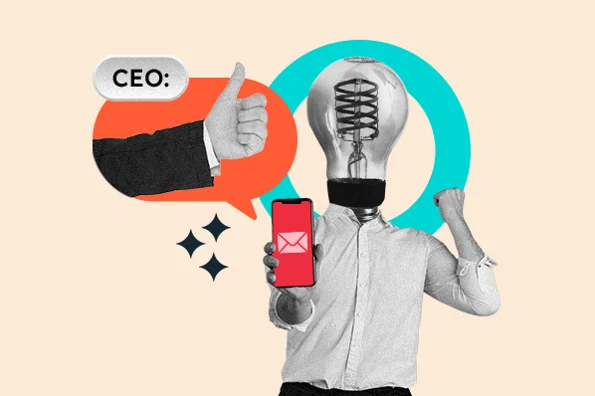
Great salespeople don’t give the same pitch or presentation over and over again. Custom positioning isn’t always enough to close deals, but you can’t go wrong playing to your prospect’s strengths and needs.
The best way to sell to your prospect will change based on their business pain and personality, and it should reflect their learning style, too.
Everybody processes information differently. A presentation that captivates one person’s attention might be confusing or utterly boring for another, even if the information is equally pertinent to both prospects.
Don’t risk losing a sale because you presented your pitch the wrong way. Optimize your selling strategy to fit the three major learning styles below.
Visual
What is the visual learning style?
Visual learners, as their label suggests, learn best through seeing depictions of ideas or concepts. Pictures, diagrams, and even text will do much more to help a visual learner understand what you’re talking about than a presentation with no accompanying visuals.
How do you spot visual learners?
Visual learners tend to take detailed notes to help themselves absorb information. They will likely be watching your body language and facial expressions carefully to help contextualize what you’re saying.
Visual learners might also use the following language when speaking with you:
- “Let’s look at it differently.”
- “I’d like to get a different perspective.”
- “I can’t quite picture it.”
How do you sell to visual learners?
Visual learners can take in a lot of information at once, so don’t be afraid to get detailed. Offer handouts, and enhance your presentations with useful visual aids. Instead of describing a feature, show screenshots or diagrams that depict how it works.
Providing supplementary materials is also helpful. Whether it’s sending over a more extensive explanation of features or a copy of the presentation, a visual learner will appreciate the opportunity to have collateral to hold on to after your call ends. Recaps of meetings that covered a lot of ground will also be helpful for the visual learner.
Auditory
What is the auditory learning style?
Auditory learners are most receptive to information they can hear. They enjoy talking through concepts and listening to people explain their ideas. Written information is not especially helpful for auditory learners, who often read text aloud to reinforce its meaning.
How do you spot auditory learners?
Auditory learners will often mirror your speech, repeating back what you’ve said to confirm their own understanding. They might not look at you during your presentation because they’re concentrating on listening to what you say.
When speaking, they use expressions alluding to sound:
- “That rings a bell.”
- “That sounds about right.”
- “That’s music to my ears.”
How do you sell to auditory learners?
Sales calls with auditory learners will skew more toward conversation than presentation. Auditory learners will want to have a discussion about what different features mean for their business instead of watching you narrate your pitch deck.
Because auditory learners master concepts best when they hear them, limit written correspondence and aim to speak in person or over the phone. Keep written materials as concise as possible, and summarize key points in bullet points instead of long paragraphs. You might also consider recording your calls and sending your prospect the audio file for reference after you hang up.
Kinesthetic
What is the kinesthetic learning style?
Kinesthetic, or physical, learners grasp concepts quickest through a hands-on approach. They want to explore new concepts for themselves instead of listening to someone else talk about them.
How do you spot kinesthetic learners?
Physical learners might appear a bit scattered in comparison to auditory and visual learners, so sales conversations may not run according to a fixed structure. Prospects with a kinesthetic learning style will likely display more physical engagement in meetings, using large hand gestures and body language to communicate.
Not sure if you’re dealing with a kinesthetic learner? Listen for these verbal cues:
- “That feels right to me.”
- “My gut is telling me ... ”
- “Stay in touch.”
How do you sell to kinesthetic learners?
Engage your prospect by getting them involved. Provide handouts (physically place them in your prospect’s hands) and walk through them together. Demonstrate features instead of talking about them or showing static pictures.
If you sell a physical product, bring prototypes that your prospect can examine for themselves. If you sell a non-physical product or service, set up a trial or interactive demonstration. In general, use the rule of thumb “show, not tell” when it comes to kinesthetic learners.
Of course, you shouldn’t rely too heavily on any one of these three selling tactics. Good presentations will always include a mix of verbal, visual, and kinesthetic cues, and guessing your prospect’s learning style incorrectly can be more damaging than relying on a hybrid selling technique. But if you’ve got a good feeling that your prospect learns a certain way, use the above techniques to tailor your selling strategy accordingly.




.jpg)
.jpg)
.jpg)
